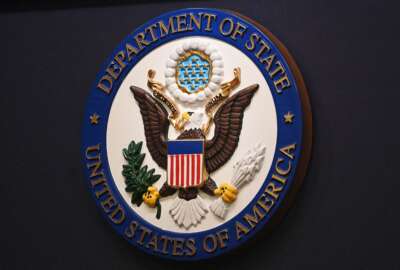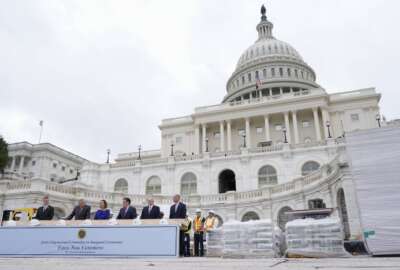Global Aerospace, Defense sectors increase revenue in 2015
In today's Top Federal Headlines, the Global Aerospace and Defense sector saw a boost in revenue in 2015, and the Army will not make the 2017 deadline for...
The Federal Headlines is a daily compilation of the stories you hear discussed on Federal Drive with Tom Temin.
- After a two-year slowdown, the global aerospace and defense sector saw a bump in revenue. A new study from the consulting agency Deloitte found the A and D sector grew by 3.8 percent in 2015. The defense subsector itself grew 1.7 percent reaching $5.8 billion in revenue. Deloitte said increased military spending is the main reason. (Deloitte)
- The Army will not meet the 2017 deadline to transition all of its technology systems to Windows 10. Lt. Gen. Robert Ferrell, the Army chief information officer, said the Army should have all of its European systems transitioned by the middle of next year. One factor holding up the Army is its legacy systems. Some programs need more planning and work before they can be shifted to the new platform. (Federal News Radio)
- A new audit found oversight weaknesses in the Pentagon’s multi-billion dollar program to upgrade its cybersecurity posture. The Defense Department has told Congress it expects to spend $1.7 billion on Joint Regional Security Stacks, the first major building block of the Joint Information Environment. But the Government Accountability Office said that estimate isn’t credible, partially because it doesn’t include the more than $900 million the department has already spent on JRSS, and because DoD hasn’t finalized the requirements for the new security stacks or how much manpower will be needed to run them. GAO said without better estimates, the program can’t be held to account for its promises of better cybersecurity at lower costs.
- Cyber threats to mobile devices are spurring government action. The General Services Administration and the Homeland Security Department have growing concerns about the security of smartphones and tablets used by federal employees. To that end, GSA and DHS are looking to industry for help in better securing mobile devices across the spectrum of products and services. GSA issued a request for information seeking input around five threat areas, including application, operating system and network based threats. GSA and DHS are hosting an industry day July 20 and responses to the RFI are due Aug. 22. (FedBizOpps)
- Vice Adm. Jan Tighe is taking over as the new Deputy Chief of Naval Operations for Information Warfare. She succeeds Vice Adm. Ted Branch, who is looking to retire. Tighe previously served as Commander of U.S. Fleet Cyber Command. (Navy)
- The Social Security Administration unveiled a plan to modernize five of its major IT systems. Social Security CIO Robert Klopp assured Congress SSA will stay within the proposed $300 million budget. Klopp said the agency is ready to get started and could make headway on modernization within a year if it gets funding from Congress. The House Appropriations Committee passed a 2017 budget that cuts SSA’s budget in 2017 by $250 million below 2016 levels. The Senate version holds Social Security funding at last year’s levels. (Federal News Radio)
- A contractor compliance provision could sink the Defense Authorization Bill for 2017. The House and Senate versions both include a provision exempting defense contractors from having to follow an executive order. The 2014 order requires contractors to file extensive reports on whether they’ve committed violations of any of 14 labor and employment laws. And their state law counterparts. Bloomberg reports, Defense Secretary Ash Carter is recommending the White House veto the bill unless Congress takes out the measure. (Bloomberg)
- The Veterans Choice Program hit what the Veterans Affairs Department calls a service milestone. Officials say more than two million appointments have been scheduled through the program. The enabling legislation passed in 2014. It aims to let veterans schedule appointments at both VA and private sector health care facilities. The Choice network includes 350,000 providers. (Veterans Affairs Department)
- The National Science Foundation pledges more than $400 million to support research on ideas like robot doctors and wireless cars. The seven-year donation will go toward the funding of the White House’s Advanced Wireless Research Initiative. The initiative promotes the improvement of wireless communication, and testing new technologies. (National Science Foundation)
Copyright © 2025 Federal News Network. All rights reserved. This website is not intended for users located within the European Economic Area.
Eric White
Eric White is news anchor and Federal Drive producer at Federal News Network.
Follow @FEDERALNEWSCAST
Related Stories
Incoming House Foreign Affairs committee chairman puts hold on State Dept and USAID project funds
OPM clarifies rules for political appointees resigning on Inauguration day
Related Topics






